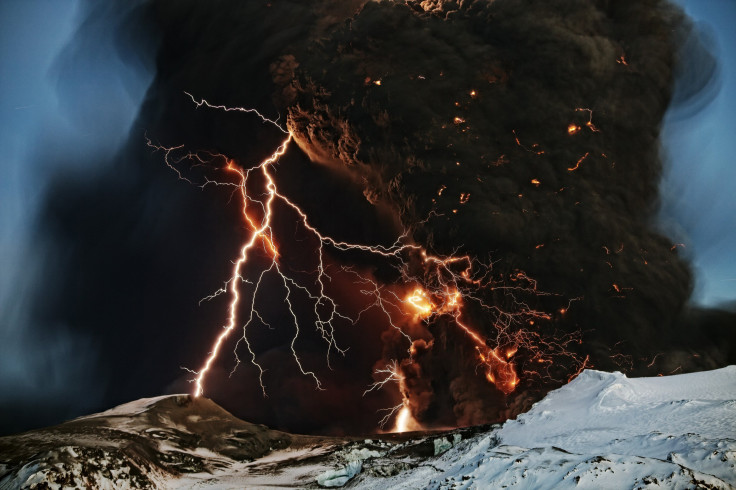Lightning Creates Antimatter Near Earth By Triggering Nuclear Reactions In The Sky

Scientists have conclusively witnessed lightning triggering nuclear reactions in the sky for the first time since it was theorized over a century ago.
High-energy electrons in lightning generate a vast amount of gamma rays that have been theorized to have the capability to induce nuclear reactions in thunderclouds. Though this idea has been widely theorized before, no one had observed it, until now.
A team of researchers from Kyoto University in Japan have published a study, Wednesday, in the journal Nature, that has observations from the first nuclear reaction observed in the atmosphere caused by lightning during a storm.
"The photonuclear reaction in the atmosphere has been theoretically expected [to be] triggered by such high energy radiation," one of the researchers, astrophysicist Teruaki Enoto from Kyoto University, explained in a press release in the journal Nature.
The team studied the gamma-ray flashes that occur when lightning is produced in the high layers of the atmosphere. These flashes have been recorded since the 1980’s and in the past decade, researchers have made further in-roads into figuring out how lightning causes nuclear reactions in the sky.

"Several groups have accumulated signatures of this phenomena, such as signals of either neutrons or positrons, which are the products of this reaction," Enoto added. The team decided that these flashes are the breadcrumbs to discovering the origin of lightning. They contained signals of neutrons of positrons ejected from their molecules, indicating a nuclear reaction.
The team used radiation detectors installed at the Kashiwazaki-Kariwa nuclear power station in Niigata, along the coast of the Sea of Japan.
During a thunderstorm in February this year, the team detected "intense radiation" from lightning strikes just off the coast, including a brief gamma ray flash.
Analyzing their properties, scientists noticed something unusual in the way lightning occurs and causes gamma ray bursts. These gamma ray bursts coincided with that part of the spectrum which is usually associated with the process of antimatter annihilation, something physicists have never seen before.
The gamma ray line that followed had an energy of 0.511 megaelectronvolts (MeV) — the energy signature you'd expect to see from positrons and electrons after a nuclear reaction. Positrons are the antimatter equivalent of electrons and their detection conclusively shows the presence of antimatter.
This showed the team the presence of antimatter in the vicinity of lightning. Antimatter is extremely rare to detect, even in space. This makes the findings by the team groundbreaking.
"This line is a conclusive indication of electron–positron annihilation, and represents unequivocal evidence that photonuclear reactions can be triggered by thunderstorms," explains experimental physicist Leonid Babich from the Russian Federal Nuclear Centre.
According to Enoto, the findings show us there's more going on in thunderstorms than we may tend to imagine. The detected particles originated from nitrogen-13 and oxygen-15 in the atmosphere. Lightings generate powerful beams of x-rays and gamma radiation and the photons from the light have an extremely high energy. This makes it deadly for humans and also can “knock out” neutrons or protons from the nuclei of nitrogen atoms, oxygen, carbon and other elements present in the Earth’s atmosphere.
The re-absorption of the neutron by particles in the atmosphere is what produced the gamma-ray afterglow.
The final, prolonged emission or the gamma ray line was from the breakdown of now neutron-poor and unstable nitrogen atoms. These released positrons subsequently collided with electrons in annihilation events releasing gamma rays.
Enoto said: "We have this idea that antimatter is something that only exists in science fiction. Who knew that it could be passing right above our heads on a stormy day?"
Also, this is only the second time we've seen radioactive isotopes being naturally produced in the atmosphere — with the other example being particles produced by cosmic rays.
"Since the radioactive isotopes are short-lived, spatially restricted, and [comprise a] relatively small amount compared to usual background radiative environments, I think there is no health risk from this phenomena," Enoto added.
The team still maintains over ten detectors on the coast of Japan, and are continually collecting data. They want to determine if all lightning cause these gamma ray bursts in the sky.
© Copyright IBTimes 2025. All rights reserved.





















